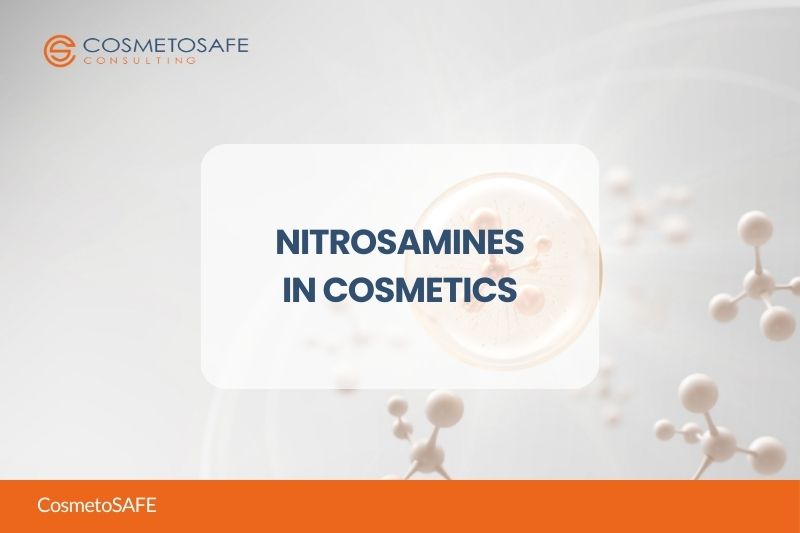What are nitrosamines and how do they form
Nitrosamines are chemical compounds classified as potential carcinogens. Nitrosamines are formed when nitrosating agents react with secondary or tertiary amines. Examples of nitrosating agents include nitrites (such as sodium nitrite) and nitrogen oxides. These compounds can be found in various environments and can react with amines from different sources. This reaction can additionally occur under specific conditions, such as high pH or elevated temperature.
Is this purely a cosmetic problem?
Definitely not! They can occur in various products, including food, pharmaceuticals, and even drinking water. Relevant risk assessment bodies assess their occurrence in consumer products and establish acceptable exposure levels/limits for their content.
Cosmetic regulations
The EU prohibits the intentional use of nitrosamines in cosmetics (Reg. 1223/2009, Annex II/400). The unintended/unavoidable presence of nitrosamines in raw materials prone to nitrosamine formation is also regulated. For some substances, such as mono-, di-, tri- alkylamines, alkanolamines, or specific hair dyes (ethanolamine derivatives), specific purity criteria regarding nitrosamine content have been defined (Annex III).
The purity of ingredients, especially those susceptible to contamination with nitrosamines, is increasingly being controlled. Other materials (unregulated ones), depending on their structural composition and manufacturing technology, may contain trace amounts of nitrosamines. It is essential to understand which raw materials groups are susceptible to nitrosamine formation.
How to control/minimize the presence of nitrosamines in cosmetics?
- Risk assessment: Regulatory bodies, as well as safety assessors, assess the potential health risks posed by the presence of nitrosamines in cosmetic products.
- Good Manufacturing Practices (GMP): It is recommended that manufacturers adhere to GMP to reduce the formation of nitrosamines. This includes precise control of production parameters, such as temperature and pH.
- Ingredient selection: It is recommended to choose ingredients with lower potential for nitrosamine formation and avoid combinations that could lead to their formation.
- Monitoring: Voluntary testing of products for the presence of nitrosamines can help manufacturers ensure safety and compliance with changing standards.
Safe levels of nitrosamines
Determining “safe” levels of nitrosamine content in consumer products, including cosmetics, is challenging. At the legal level, a safe level of its content in cosmetic raw materials (prone to nitrosamines formation) has been defined, but a general safe level for cosmetics is not unequivocally established. Often, in risk assessment, the principle of “As Low As Reasonably Achievable” (ALARA) is applied. Another approach is based on the concept of the Threshold of Toxicological Concern (TTC). Both approaches aim to limit exposure to potentially harmful substances to the lowest possible levels, considering technical and practical limitations. More information can be found in the SCCS guidelines on safety assessment (SCCS/1647/22).
Risk assessment and exposure conditions
When assessing the health risk of nitrosamines, exposure conditions must be considered. This includes the frequency and duration of cosmetic use, the content of materials with nitrosamine traces in the formula (or the possibility of their formation), and the routes of exposure. Understanding these factors is essential for a comprehensive risk assessment and determining whether a specific level of trace nitrosamine content is low enough to classify the health risk as negligible.




